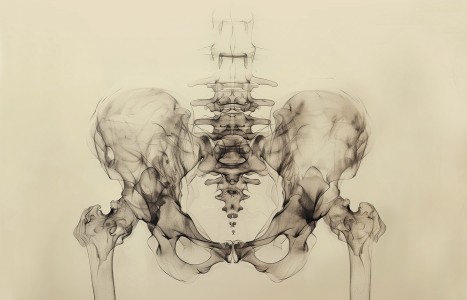People today want convenience, whether it be from their bank, credit card, favorite retail store, or restaurant. They demand it from the companies who hold their loyalty, including their health care providers (you). They don’t want to call and possibly be put on hold, and they want to use an app or schedule an appointment on your website. Here are three reasons your practice can gain by switching to online appointment scheduling.
International Congress on Integrative Medicine
"Bridging Research, Clinical Care, Education and Policy" was the theme for the International Congress on Integrative Medicine and Health 2016 (ICIMH). Several hundred attendees from North and South America, Europe, India, South Korea, Australia and Asia gathered in Las Vegas May 17th to 20th for the conference convened by the Academic Consortium for Integrative Medicine and Health (The Consortium). Partnering with the Academic Consortium for Integrative Health, the Academy for Integrative Health and Medicine, the Integrative Health Policy Consortium and the International Society on Complementary Medicine Research, the Consortium sponsored plenary sessions, oral presentations and poster presentations on a full spectrum of physiological and clinical research, educational concerns and health policy issues.
Presentations and experiential sessions covered a range of topics including acupuncture and acupressure, traditional Asian medicine, tai qi and qi gong, Ayurvedic approaches, yoga, chiropractic, massage, nutrition, herbal medicine, homeopathy, meditation, integrative nursing practices, craniosacral therapy, naturopathy, and music and art therapies.
ICIMH seeks to promote developing multi-disciplinary collaborations and to strengthen existing partnerships in the area of integrative medicine and health. A strong commitment to mentoring the upcoming generation of clinicians, researchers, and policy was reflected in ICIMH's emphasis on including students as an integral part of conference activities.
Opportunities for discussion and interaction with speakers were reflected in ICIMH's commitment to advancing multi-disciplinary dialogues between researchers and clinicians of various traditions. A vision for global health and well being is being co-created by clinicians, scientists, researchers and public health activists. This conference brought stake-holders together to engage in the envisioning and developing process.
Of particular interest to readers of Acupuncture Today were the numerous presentations related to traditional Asian medicine including acupuncture and acupressure. An impressive array of studies were presented that included randomized clinical trials, comparative effectiveness research, health service research, and clinical experience. Our public health colleagues were especially gratified to learn about health service research efforts that examine acupuncture as it is actually practiced in clinics. These types of studies examine issues related to accessibility of acupuncture services, affordability and reimbursement mechanisms, and evaluation of care through assessing clinical outcomes and patient satisfaction with care.
More than 20 oral presentations were devoted to acupuncture or acupressure. The complete description of conference presentations can be accessed here:
www.icimh.org/agenda. Abstracts have been published in the Journal of Alternative and Complementary Medicine and may be viewed at:
http://online.liebertpub.com/doi/full/10.1089/ACM.2016.29003.abstracts.
A sampling of oral presentations include the following topics:
- Differential Effects of Two Acupressure Point Combinations on Brain Neurochemistry and Connectivity in Breast Cancer Survivors with Persistent Fatigue – Richard Harris et al.
- Acupressure for Persistent Cancer-related Fatigue in Breast Cancer Survivors: A Randomized Clinical Trial – Suzanne Zick et al.
- Effectiveness of Additional Self-Care Acupressure for Women with Menstrual Pain Compared with Usual Care Alone: A Two-armed Randomized Pragmatic Trial – Susanne Blotte et al.
- Integrating Acupuncture into a Community Health Center: Assessment of Health Outcomes, Cost of Care and Patient Satisfaction – Elizabeth Sommers, Kristen Porter.
- Effectiveness and Implementation of Acupuncture Among Inpatients: Results from a Pilot Practical Clinical Trial – Maria Chao et al.
- Improving Knowledge and Beliefs About Acupuncture: A New Evidence-Based Website for Patients – Felicity Bishop et al.
- Integrating Community-based Acupuncture Services for People Living with HIV/AIDS into Hospital Settings – Sommers, Porter et al.
Acupuncture presenters Dr. Lucy Chen, MD, and Dr. Jianren Mao, MD, PhD, from Massachusetts General Hospital in Boston engaged in a lively debate on the role of acupuncture as a peri-operative approach. The title of their presentation was "Acupuncture Therapy for Pain Management: Evidence of Effectiveness and Innovative Assessment Tools." Mao's position was that although acupuncture has certainly been demonstrated as an effective non-pharmacological means of managing pain, its value before or after surgery has not yet been sufficiently researched. There is not yet a body of evidence that clearly demonstrates that acupuncture treatment can be effective in this setting. Chen countered that in her experience, acupuncture could be effective as part of a comprehensive approach to pain management at times both before and following surgical procedures. She also cited the value of acupuncture for stress management peri-operatively. Although the jury is still out on this question, the importance of examining this area of treatment is high and will certainly captivate the attention and focus of researchers and clinicians throughout the world.
The future of multidisciplinary education and training also featured prominently in the remarks of a number of speakers. One of the plenary sessions was given by Barbara Brandt, PhD, and entitled "Interprofessional Education and Collaboration in a Transforming Health System". Dr. Brandt works with the National Center for Interprofessional Practice and Education. Her talk emphasized the importance of team approaches in provider training. A number of acupuncture schools and programs in the U.S. have already integrated this type of approach in bringing together students from different health fields and providing opportunities for shared education. Most notably, these institutions include Bastyr University, Southern California University of Health Sciences, and the recently merged New England School of Acupuncture and the Massachusetts College of Pharmacy and Health Sciences.
As a testament to how far our field has advanced, a number of presentations described integrative services as practiced in hospitals throughout the world. The question has evolved from "does acupuncture provide safe and effective clinical treatment?" to "what are the optimal scenarios for integrating acupuncture treatment?". Acupuncture practice has definitely earned a place at the health care table.
Moving toward a culture of health that incorporates values-based medicine is one potential direction that can be taken. Health policy advocates have described the "triple aim" of creating this culture of health. Namely, in order to improve the U.S. health care system, the simultaneous pursuit of three aims will be required: improve the experience of care; improve the health of populations; and reduce costs of health care per capita (http://content.healthaffairs.org/content/27/3/759.full).
Learning from the experience and vision of international presenters about the many models of integrative practice emerge offered inspiration and hopefulness about addressing the issues of the current system of health care delivery in the U.S. In particular, the future of health care may rely on trans-disciplinary teams that bring a variety of perspectives and expertise to improving patient care and wellbeing. This is good news for those who value collaboration and cross-pollination of ideas. The roles that acupuncture may take in these future scenarios are up to us and our profession to delineate. We have every reason to be hopeful.


